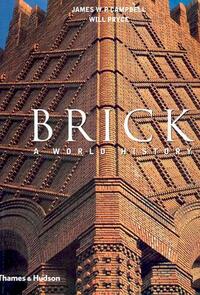Take a photo of a barcode or cover
Absolutely breathtaking in every way, and possibly my all time favourite architecture book. Yes, it's huge, but it's got a lot to cover! And this is a true labour of love from the authors - ten trips across the globe over the course of three years, to document and photograph the first archeological findings of brick masonry, to adobe structures and the beauty of Mesopotamian dwellings and tombs. The photography is so stunning, I find myself just locked into a picture, transfixed by the intricate detail and masterly craftsmanship of Indian temples, cool glazed teal and fired orange brick. The book works in a more or less chronological order, ending with the use of modern brick in the 21st century, and attempts by architects to try to reclaim it as a sustainable and useful material, with a creative future. This, amid a world obsessed with glass, steel and concrete. A rare book in that its coffee-table size belies its content, which is well balanced as a (quite hefty) read, to accompany the visuals. If for nothing else, read it to discover the Evry Cathedral of Paris, or the Monadnock building in Chicago (the world's tallest brick skyscraper). Or even better yet, read it for the wonderful section devoted to Dudok's Hilversum Raadhuis, a 1928 masterpiece of bespoke brick that crosses the boundaries of De Stijl and Art Deco. In fact, it set the example from which the British modernist movement followed, for years to come. You have only to go as far as the brick 1930's London Underground stations to see how the vision of the Hilversum town hall guided a nation into a new age of civic, and then pleasure, architecture. If you're a Dudok nut like me, you'll know how hard it is to find a good English commentary on it, let alone with photographs that you've only ever dreamt about; the treatment it deserves. If you aren't obsessed with brick before you begin, you will be by the time you finish.
